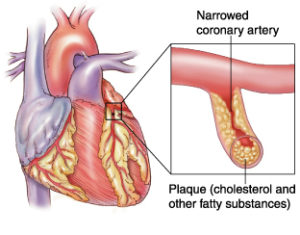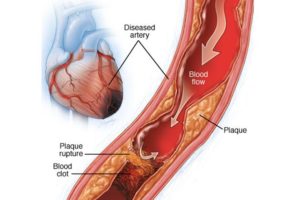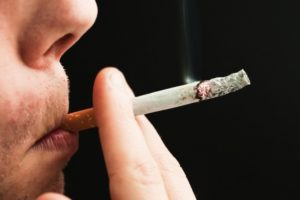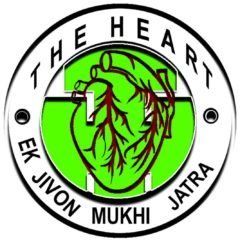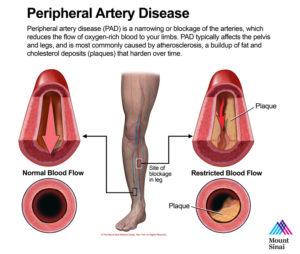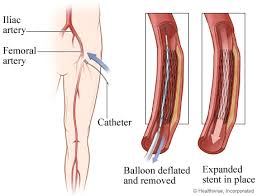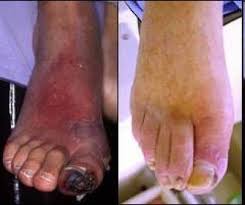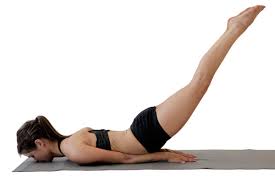Staying active, making healthy food choices and
avoiding known risk factors can reduce your risk of getting cancer.
Dr B C Roy
Smoking & Tobacco
Tobacco use is responsible for at least 30% of all cancer deaths. Smoking causes almost 90% of all lung cancers. People who live with smokers are more likely to develop lung cancer and even limited exposure to secondhand smoke can raise your heart disease risk.
Smoking causes 85% of all lung cancers. If you smoke, even occasionally, quit smoking. The health benefits of quitting starts instantly after you stop smoking.
If you live with a smoker or you are regularly exposed to secondhand smoke, you are more likely to develop lung cancer. Even limited exposure to smoke can raise your heart disease risk.
Other Nicotine Products
Cigars, pipes and hookahs are not safe alternatives to smoking. In fact, hookah users may inhale more smoke than cigarette smokers, because hookah sessions often last an hour or more.
Smokeless tobacco products like chewing tobacco and snuff can cause mouth and throat cancers. Snuff may increase your risk for cancers of the mouth, esophagus, stomach and pancreas.
E-cigarettes are smokeless devices that vaporize a solution of nicotine, flavoring and other chemicals. E-cigarettes are not a safe alternative to smoking. Their ingredients are unregulated, and there is no evidence they are effective as a smoking cessation tool. While they do not contain tobacco, the nicotine they contain is highly addictive and harmful.
Taking the right food can prevent cancer.
Chances of developing cancer and chronic diseases can be reduced by making healthier food choices. A diet rich in plant foods like whole grains and legumes can give our body the range of vitamins, minerals and antioxidants it needs to stay healthy. And also, eating a variety of healthy foods can help prevent weight gain and decrease body fat.
Fill your plate with 2/3 or more of vegetables, fruits, whole grains or beans and 1/3 or less of lean animal protein. The AICR also recommends the following nutrition-related actions to reduce your cancer risk:
Avoid sugary drinks and limit consumption of energy-dense or high-calorie foods.
Limit consumption of red meats to 18 ounces of cooked meat per week. Red meat includes beef, pork and lamb.
Avoid processed meats like ham, bacon, sausage, hot dogs and deli meat.
Limit alcoholic drinks to 2 for men and 1 for women a day.
Limit consumption of added salt, salty foods and foods processed with salt (sodium).
Don’t use supplements to protect against cancer
Physical Activity
Living an active lifestyle can help prevent obesity, which is a major risk factor for cancer.
By increasing your physical activity, you lower your risk of many types of cancers including breast, endometrial, prostate, colorectal and lung cancers. Aim for at least 150 minutes of moderate exercise each week or 75 minutes of more vigorous exercise each week. Examples of moderate activities include walking, yoga and mowing the lawn. Examples of vigorous activity include running or jogging, fast bicycling and swimming. In addition, sit for less time each day. Sitting too much increases body fat, which leads to cancer and other chronic diseases. Try to get up and move for one to two minutes every hour that you are awake.
Do muscle strengthening exercises at least twice a week. Strength training helps you maintain a healthy weight because the more muscle you have, the higher your metabolism.
Skin Safety
Limiting your exposure to the sun goes a long way in preventing skin cancer and melanoma.
Skin cancer is most common cancer in the western countries. But it’s the most preventable cancers. The primary cause is too much exposure to sun. People of all skin colors can develop skin cancer. It’s the easiest cancers to detect. Most of its types are highly curable too.
Risk factors for skin cancer include:
Frequent or intense sun exposure
One or more blistering sunburns
Red or blond hair, fair skin, freckles and blue or light-colored eyes
More than 50 moles
A family history of melanoma
A personal history of melanoma
A personal history of basal cell or squamous cell skin cancers
HPV
The human papillomavirus is a risk factor for several types of cancer. However, getting an HPV vaccination for your children can reduce their cancer risk. About 80% of people –both men and women – will get a human papillomavirus (HPV) infection at some point in their lives. HPV is spread by intimate skin-to-skin contact. While most cases are sexually transmitted, people who haven’t had intercourse can become infected.
There are many strains of human papillomavirus (HPV). Several types are linked to cancer. Most people with HPV don’t know they’re infected and never develop symptoms or health problems from it.
The body usually clears HPV on its own. When it remains, it can lead to health problems such as genital warts and several types of cancer, including:
Cervical cancer
Penile cancer
Anal cancer
Oropharyngeal cancer
Screening tests can determine if a woman has HPV. There is no screening exam to detect HPV or HPV-related cancers in men, and there are no treatments for the virus itself. However, there are ways to treat HPV-related health problems, such as precancerous lesions and genital warts.
About the HPV Vaccine:
HPV vaccines that are used—–
Cervarix (HPV 2) and Gardasil (HPV 4) protect against the most common HPV types and against cervical, anal, vulvar, vaginal, penile and oropharyngeal cancers. Only Gardasil protects against the HPV types most likely to cause genital warts. These vaccines prevent about 70% of cervical cancers.
Gardasil 9 (HPV 9) protects against nine types of HPV, including five that other vaccines don’t cover. It also prevents about 90% of cervical cancers.
The vaccines are available for males and females ages 9 to 26. Girls and boys shouid receive the vaccine around age 11 to 12 years.. HPV vaccines are given in a series of three shots over six months. Your child must complete the three-shot series for maximum protection from cancer.
Things to know about the HPV vaccine
The HPV vaccine is a safe and effective vaccination against cancer.
No research links the HPV vaccine to earlier or increased sexual activity in boys or girls.
Becoming pregnant after receiving the HPV vaccine is safe for both mother and fetus.
HPV and cervical cancer
Because no vaccine prevents all types of HPV that can cause cervical cancer, vaccinated women age 21 to 29 should still receive Pap tests every three years.
In addition to Pap tests, women age 30 to 64 also should be tested for HPV every five years. This exam checks your cervix for the virus that can cause abnormal cells that lead to cervical cancer. It may show that more frequent screening is needed.
Women age 65 or older should discuss their individual need for screening with their doctor.
Foods that can reduce your cancer risk
Harvest
Sweet potatoes
Broccoli
Cauliflower
Spinach (preferably organic)
Kale or collard greens (preferably organic)
Peas (fresh or frozen)
lettuce
Tomatoes (no salt added if canned)
Garlic
Pears
Oranges
Red or purple grapes (preferably organic, if imported)
Fresh or frozen berries (preferably organic)
Protein
Lean chicken
Lean fish such as salmon, halibut, redfish or red snapper
Tofu
Black, red or pinto beans (low sodium)
Garbanzo beans/chickpeas (low sodium)
Dairy
Skim milk
Low-fat cheese
Eggs or egg substitutes
Grains
Wild rice or brown rice (regular or instant)
Whole grain pasta
Lentils
Bread
Whole grain bread, tortillas or bunCereal
Bran flakes
Oatmeal
Snacks
Popcorn
Whole grain tortilla chips or crackers
Almonds (plain, unsalted)
Condiments
Olive oil
Canola oil
Low-fat or fat-free salad dressing
Spices
Turmeric
Beverages
Purple grape juice (100% juice, no added sugar)
Green or white tea (tea bags or loose)
Water
